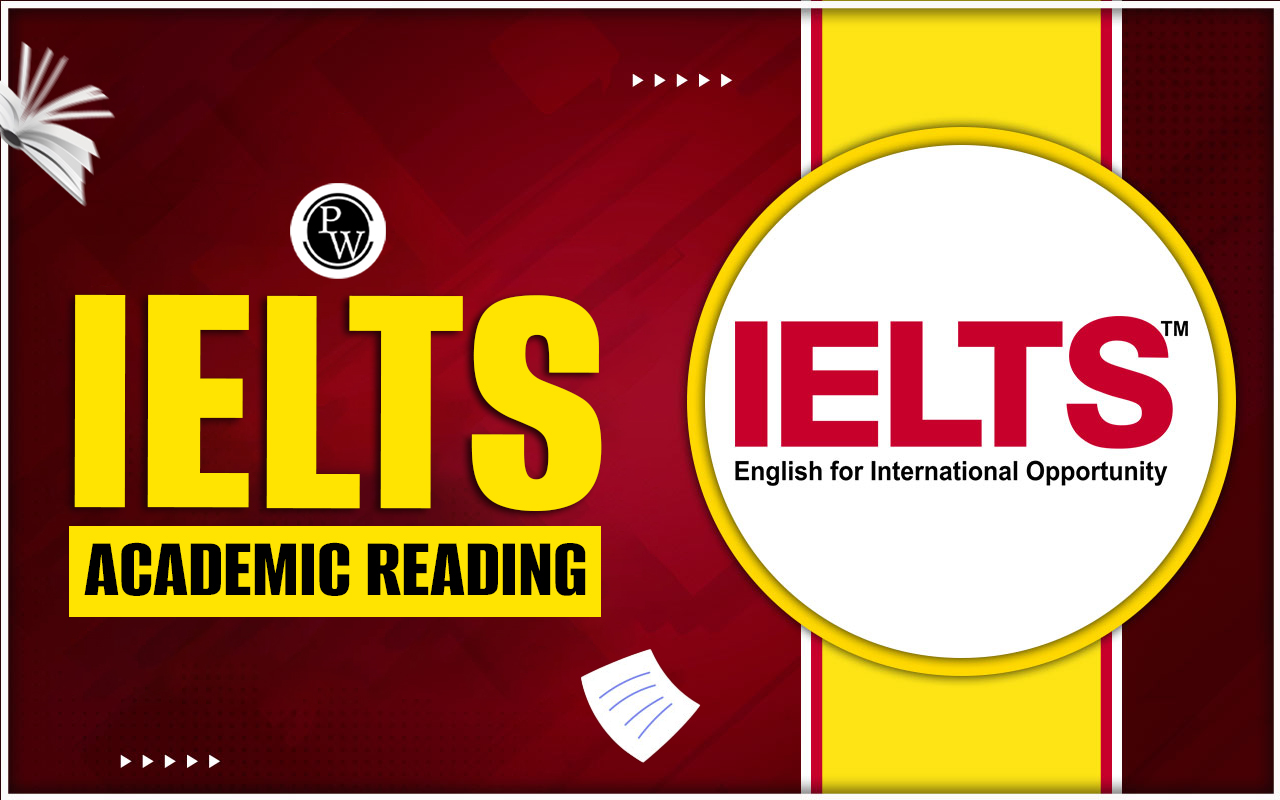
IELTS Academic Reading: The IELTS Academic Reading test assesses the English language ability of candidates aiming to study or work in an English-speaking country. The IELTS Academic Reading test pattern is very straightforward. The test assesses the skimming, scanning, reading, and other essential skills required to study abroad. The Academic Reading test is used to apply for different university programs and professional registration. Here, we have included the structure, question types, and effective strategies to score a high IELTS band score in the test.
Read : IELTS Reading Question Types
The IELTS Academic Reading test includes three long texts. The duration of the test is 60 minutes. The questions in this test are taken from numerous resources, such as books, journals, magazines, and newspapers.
The Academic Reading test is not just about understanding text. It evaluates a spectrum of reading skills, including:
Skimming for the general meaning
Scanning for specific information
Reading for detail
Identifying the writer’s attitude, opinion, or purpose
Understanding implied meaning or inference
Following the development of an argument
Read : How to Improve IELTS Reading Score
The IELTS Academic Reading includes different types of questions, such as Multiple Choice, Identifying Information (True/False/Not Given), Identifying Writers’ Views/Claims (Yes/No/Not Given), Matching Information, Matching Headings, Matching Features, and others.
You may be asked to:
Choose one correct answer from the four options
Complete a sentence by selecting the correct ending
Choose more than one answer when instructed
This question type checks your overall comprehension and ability to identify specific points or main ideas.
Cambridge Free IELTS Reading Practice Tests PDFs
You’ll determine whether the given statements:
Agree with the text (True)
Contradict the text (False)
Are not mentioned (Not Given)
This type tests your attention to detail and your ability to distinguish between stated facts and assumptions.
Similar to the previous type, but here you focus on the writer’s opinion rather than factual accuracy.
Yes = agrees with the writer’s view
No = contradicts the view
Not Given = view not stated
Also Read:
Candidates are required to match statements to the correct paragraph in the text. This question tests your scanning ability and how well you identify specific details like reasons, descriptions, or comparisons.
Candidates are required to choose the correct heading for each paragraph or section from a list of options. This section evaluates your skill in identifying main ideas and understanding paragraph structure.
Match information or statements to a list of options (e.g., people, places, years). Some options may be used more than once, or not at all. This tests your ability to link facts and opinions across the text and understand relationships.
Here, you’re given the first half of a sentence and must choose the appropriate ending. This requires a strong grasp of text cohesion and logical flow.
Fill in the missing words in sentences using words from the passage.
Pay attention to:
Word limits (e.g., “NO MORE THAN TWO WORDS”)
Grammar and meaning
This type checks your ability to locate specific information.
You’ll complete summaries, notes, tables, or flow-charts based on a section of the text.
There are two versions:
Using words from the text
Selecting words from a given list
This format assesses your skill in understanding and summarizing details.
Complete labels for a diagram (e.g., part of a machine or a process) using the reading text as your reference. This question type evaluates your ability to connect descriptions with visuals.
Answer factual questions using information from the passage. You must adhere to the word limit and use exact wording from the text. This tests your precise understanding of facts and ability to locate information quickly.
Total time: 60 minutes
Number of texts: 3
Question count: 40
Marking: 1 point per correct answer
Band scores: Scaled from 1 to 9 (including half bands)
Important note: There is no additional time for transferring answers to the answer sheet—this must be done within the 60-minute window.
Spelling and grammar must be accurate. Even a small mistake can cost you points.
Consider the following tips to improve your IELTS band score in the Academic Reading section:
Use materials like:
Scientific articles
Opinion columns
University-level essays
These will help you get accustomed to complex sentence structures and formal vocabulary.
Allocate roughly:
20 minutes per section, including reading and answering
Leave 2–3 minutes at the end to review your answers
Skim for general meaning before diving into the questions. Use scanning to locate keywords related to the questions.
Misreading the task (e.g., exceeding the word limit) can cost you marks. Always double-check what is being asked.
Answer only based on the content of the passage, not what you already know about the topic.
Make sure you are comfortable filling in the answer sheet correctly, especially under time pressure.
Physics Wallah offers multiple online IELTS courses for all students. Follow the IELTS pages to better prepare for the exam.
| What is IELTS Exam? | Documents Required for IELTS Registration |
| IELTS exam eligibility requirements | IELTS Exam Fees |
| IELTS test results | IELTS Exam Pattern |
